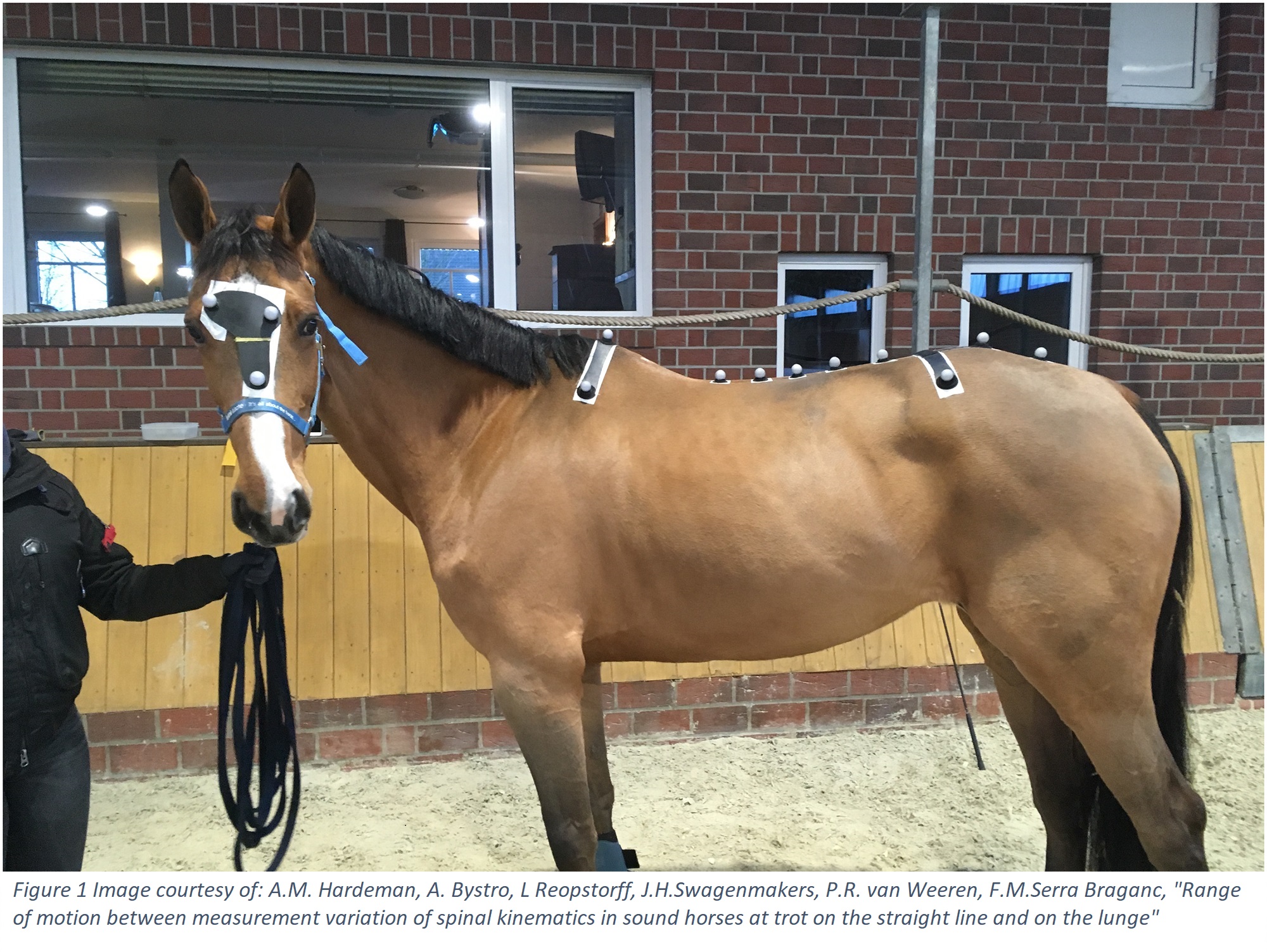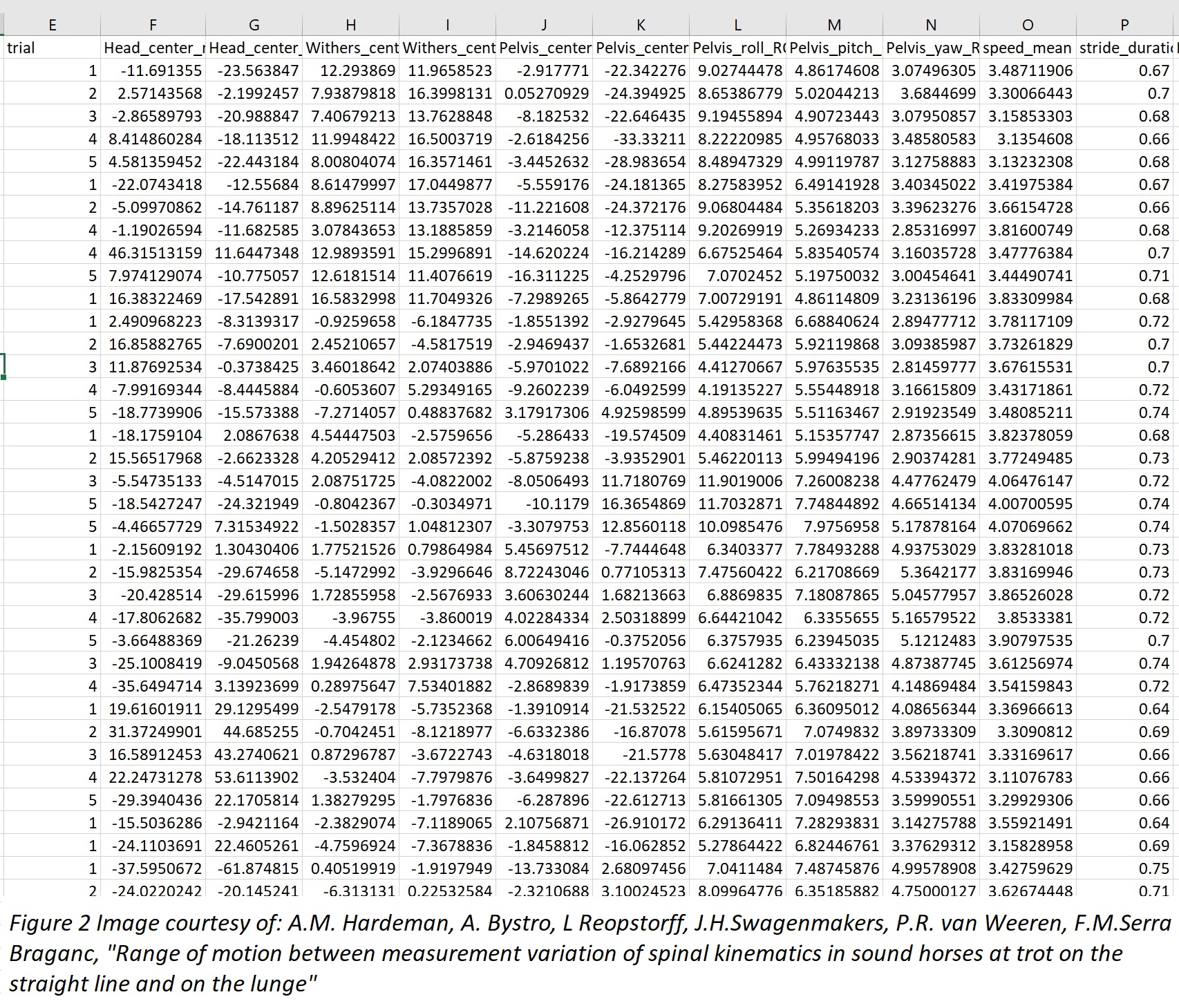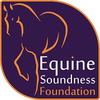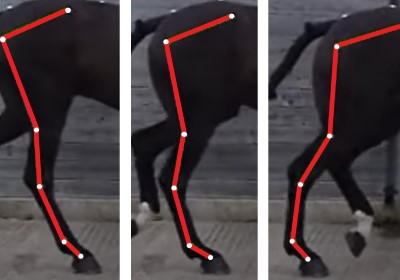What is kinematics it and how is it used with horses?
Kinematics is an area of study that is used to analyze motion. It is not to be confused with its close relative, Kinetics, which is concerned with forces. Kinematics looks at movement patterns by taking snapshots in time. Why is kinematics important for horses? It is because analysis of movement patterns can tell us whether our horses show early signs of lameness or other locomotion abnormalities that can ultimately lead to injuries and lameness 1.
 A common way that researchers acquire kinematics data is by placing reflective markers on the body and taking video with multiple high frame rate cameras.
A common way that researchers acquire kinematics data is by placing reflective markers on the body and taking video with multiple high frame rate cameras.
Each frame of the video represents one data point for each marker. The horse in Figure 12 has markers attached for a study of spinal kinematics.
The data acquired from this set up looks like Figure 22. The measured values are then analyzed mathematically to calculate parameters like stride duration, stride frequency, speed, range of motion (ROM) of the head, withers ROM, pelvis pitch, yaw and roll, lateral bending of the spine, flexion and extension of the spine, etc. (Pitch, yaw and roll can be remembered like this: your head pitches when you nod "yes", it rolls when you make your ear closer to your shoulder, and it yaws when you shake your head "no".)
These parameters can then be used to compare kinematics between different horses, or to examine the same horse under different conditions or pathologies. While this field of study is still emerging in horses, advances continue to be made in the measurement tools, and the benefits of kinematics analyses (sometimes referred to as motion analysis or gait analysis) are already greatly appreciated and utilized in human athletics.
 Aside from highly technical data acquisition, kinematic analysis can also be performed through observation. For example, a competition judge or veterinarian who is judging or grading the gait quality either for competition or for diagnostic purposes would be conducting observational kinematic analysis. It is understood that such analysis often lacks consistency among observers 1. Each observer may perceive abnormalities in movement patterns quite differently. However, in human practice there are some indications that observational kinematic analysis can also be consistent among practitioners 3 4 5
Aside from highly technical data acquisition, kinematic analysis can also be performed through observation. For example, a competition judge or veterinarian who is judging or grading the gait quality either for competition or for diagnostic purposes would be conducting observational kinematic analysis. It is understood that such analysis often lacks consistency among observers 1. Each observer may perceive abnormalities in movement patterns quite differently. However, in human practice there are some indications that observational kinematic analysis can also be consistent among practitioners 3 4 5
Some researchers in the human injury prevention and rehabilitation field acknowledge the difficulties of recognizing the kinematics differences in moving athletes, and state that “generally, people see only what they look for, and they look only for what they know” 6. This means that kinematic analysis can be instrumental in differentiating between healthy and unhealthy locomotion in horses once the distinguishing parameters are identified. From there, specialized training and rehabilitation can be tested for validity in creating healthy locomotion.
-
Ross MW, Dyson SJ. Diagnosis and Management of Lameness in the Horse. Elsevier/Saunders; 2011. -
Hardeman AM, Byström A, Roepstorff L, Swagemakers JH, van Weeren PR, Serra Bragança FM. Range of motion and between-measurement variation of spinal kinematics in sound horses at trot on the straight line and on the lunge. PLoS One. 2020;15(2):1-19. doi:10.1371/journal.pone.0222822 -
Bernhardt J, Bate PJ, Matyas TA. Accuracy of observational kinematic assessment of upper-limb movements. Phys Ther. 1998;78(3):259-270. doi:10.1093/ptj/78.3.259 -
Krebs DE, Edelstein JE, Fishman S. Reliability of Observational Kinematic Gait Analysis. Phys Ther. 1985;65(7):1027-1033. doi:10.1093/ptj/65.7.1027 -
Fisioter RB, Fisioterapia RB De. Validity and intra- and inter-rater reliability of the Observational Gait Scale for children with spastic cerebral palsy. 2009;13(June). -
Macintyre J, Joy E. Foot and ankle injuries in dance. Clin Sports Med. 2000;19(2):351-368. doi:10.1016/s0278-5919(05)70208-8

